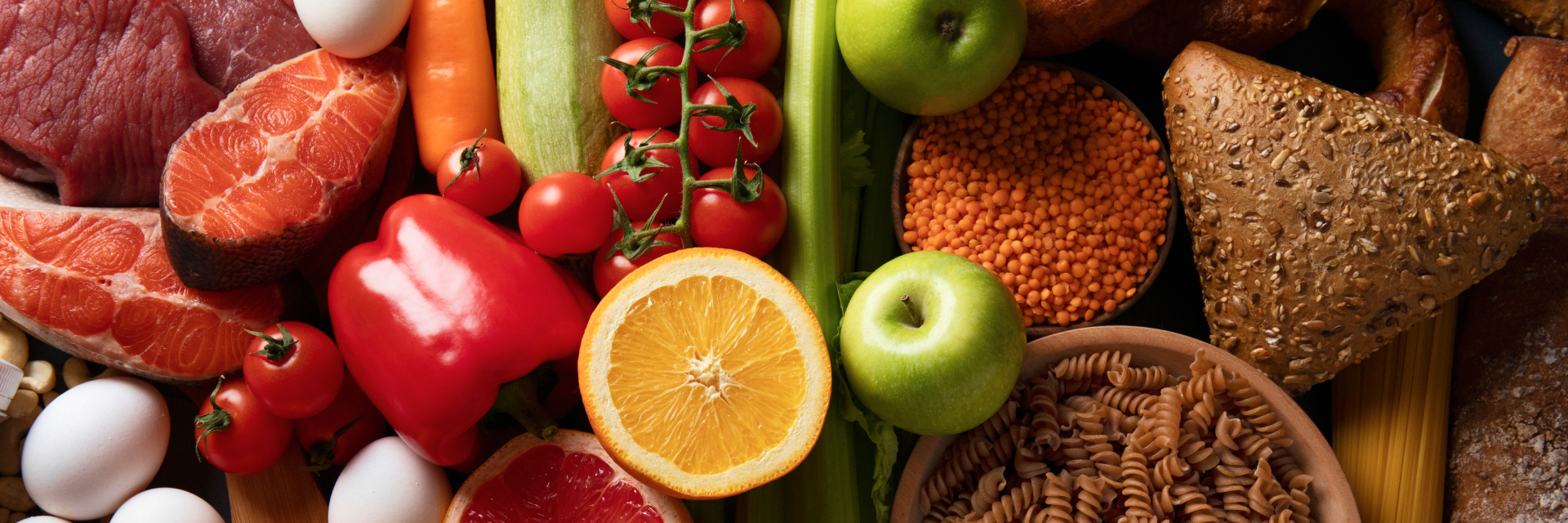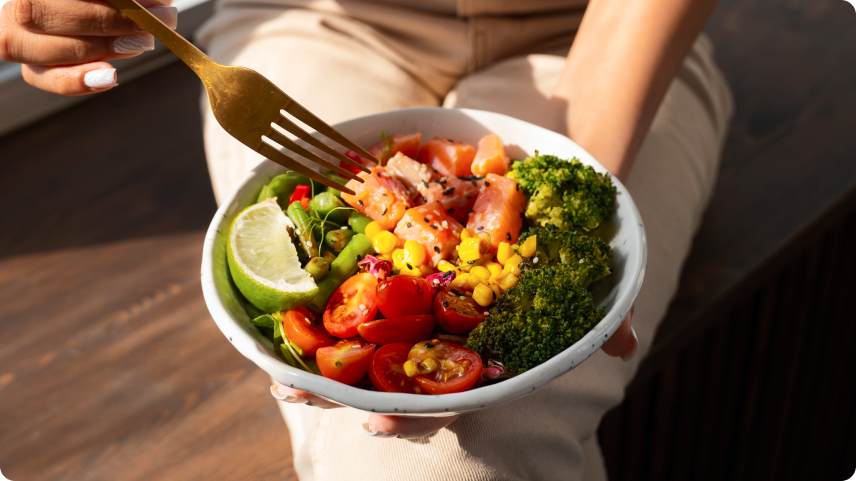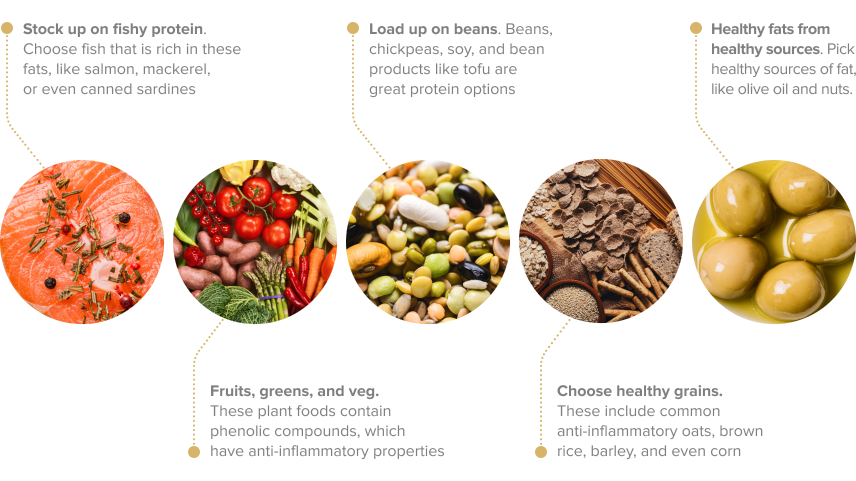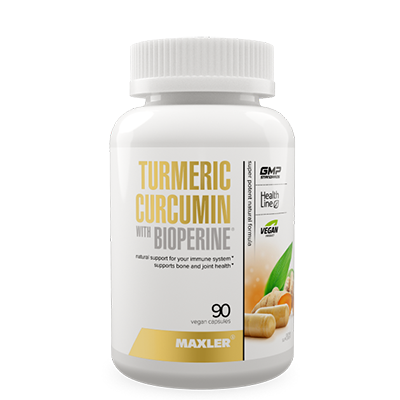Does the word inflammation bring up unsightly pictures in your mind or send shivers down your spine? It can be confusing and even a little daunting to understand what inflammation is and what it does to the body. In this post, we’ll be looking at just that, and how you can naturally reduce inflammation with the help of your meals – think of this article as your go-to guide for starting an anti-inflammatory diet. Ready to jump on the anti-inflammatory train?
What is inflammation?
This big and scary word is often associated with the hot swelling of getting a cut. This type of temporary inflammation, called acute inflammation, is vital for maintaining health. It acts as a defence against pathogens and helps the body recover from injury and illness. However, if inflammation remains unresolved, a state of low-grade inflammation can persist. The presence of this low-grade, chronic inflammation can damage surrounding tissues. This type of inflammation is an overriding factor in many chronic illnesses and diseases.
Why should you eat an anti-inflammatory diet?
The foods included in an anti-inflammatory diet are rich in beneficial nutrients. They can help to reduce markers of inflammation in the body, potentially alleviating symptoms of chronic conditions and lowering the risk of certain diseases.
The basics of the anti-inflammatory diet
To help you get started, we’ve compiled this list of key anti-inflammatory foods that you can focus on first. By including them in your meals every day, you can support your body in fighting low-grade inflammation.
Stock up on oily fish. Omega-3s found in fish are anti-inflammatory nutrients found in fish like salmon, mackerel, or even canned sardines! You should aim to eat fish like these at least twice a week, but if needed an omega-3 supplement can also help you meet your requirements.
Prioritize fruits, veggies and greens. These plant foods contain phenolic compounds, which have anti-inflammatory properties. These include compounds like flavonoids, isoflavones and polyphenols which act as antioxidants. Including a wide variety of colorful plant foods is the best way to get a variety of these beneficial compounds so it’s worth stocking up. Hot tip: If you’re looking for an easy way to include them, fresh and frozen fruit and veggies make for great juices and smoothies!
Load up on beans. Many anti-inflammatory diets, like the Mediterranean diet, prioritize plenty of pulses like beans, chickpeas and lentils. They have compounds that can lower inflammation, such as antioxidants, saponins, and polyphenols. If you’re plant-based, remember that although pulses are a good source of protein, they are incomplete because they’re missing some of the essential amino acids. Combining a variety of pulses with other plant proteins is a good strategy to fill those gaps, or you can add in a supplement to get all of those amino acids directly.
Choose whole grains. Love your bread and pasta? Don’t worry, an anti-inflammatory diet makes room for high-fiber, unprocessed grains. The fiber in whole grains is the main nutrient with anti-inflammatory benefits, but other compounds like vitamins, minerals, fatty acids, and phytochemicals also play a role. Try including oats, brown rice, barley and corn, or any other wholegrains you like to boost your anti-inflammatory meals.
Healthy fats from healthy sources. Fats are important for the body, not only for energy but also for absorbing nutrients and making certain hormones. But some fats are healthier than others, and when it comes to reducing inflammation you want to focus on plant-based sources of fats like extra virgin olive oil, avocado, nuts and seeds, alongside those oily fish we mentioned earlier.
Don’t be afraid of herbs and spices. Many dried herbs and spices contain concentrated amounts of phytochemicals that have anti-inflammatory and antioxidant properties. They are also easy to add to recipes and add flavour to your meals. One of these is turmeric, which is easy to add to food. For a boost of highly bioavailable turmeric curcumin, try Maxler Turmeric Curcumin with BioPerine – a great option for those who don’t quite like the spice’s taste.
Choose your cooking methods. While deep-frying, roasting and grilling are often easy and tasty, cooking methods that brown or char food may contribute to inflammation in the body. Opt for stewing, steaming, poaching or fast-frying where you can.
What to look out for
It’s good to know what you should include in an anti-inflammatory diet, but what foods should you limit or avoid?
- Cut down on processed foods. Processed foods can contain a lot of added salt, sugars, and fats. This includes things like store bought cakes and pastries, sauces, candy, and even non-dairy coffee creamer, as these foods can be high in trans fats and sugars. Sugary sodas should also be limited. Processed meats like lunch-meat or hot dogs are especially good to limit. Many processed foods contain compounds known to contribute to inflammation.
- Avoid deep frying. Deep fried foods, like French fries can contribute to inflammation. The same is true for grilled meat, as it may release compounds associated with cancer. Lower-fat foods like vegetables and fish are okay to be grilled. Instead of frying or grilling, choose healthier cooking methods like microwaving, steaming or baking.
- Skip the trans fats. Trans fats aren’t the greatest for our health. Therefore, it can be a good idea to lower your intake of foods like margarine. Look out for things that contain partially hydrogenated oils – that’s a giveaway that a food has trans fats.
Top tips on getting started
Now that you’re well-equipped with the fundamentals of an anti-inflammatory diet, it’s time to go through some tips that can help you stick to it:
- Start slow – Changing your diet can be overwhelming so don’t feel like you need to do everything at once. Start with small changes, one at a time and build up from there.
- Plan what you eat – it’s easier to cook and shop if you know what you’re having in advance.
- Try new things – The best way to boost the anti-inflammatory properties of your diet is to include a wide variety of plant foods, so don’t be afraid to try new herbs, spices and veggies that are new to you!
- Think smart snacks – When you need a quick bite, it’s easy to reach for ultra-processed foods, but nutrient-dense whole foods like fruit and nuts make a much better snack that will keep your body tackling inflammation, bit by bit.
- Stay hydrated – Remember to drink plenty of water during the day. Many foods mentioned here will help you meet your hydration requirements and supply essential minerals for hydration. However, if you’re active, exercising for long or in hot conditions, try adding Electrolyte Powder to your drinks for effective hydration.
- Listen to yourself – as with any change, remember to listen to your body. Be kind and feel free to adjust should you need to.
An anti-inflammatory diet doesn’t have to be difficult or time-consuming. By using household staples, and prioritizing foods that are rich in beneficial nutrients or foods that fight inflammation, you can help your body tackle the challenge. So, get out there, and try new foods, new spices, and new meals to get closer to a healthier and happier you.









